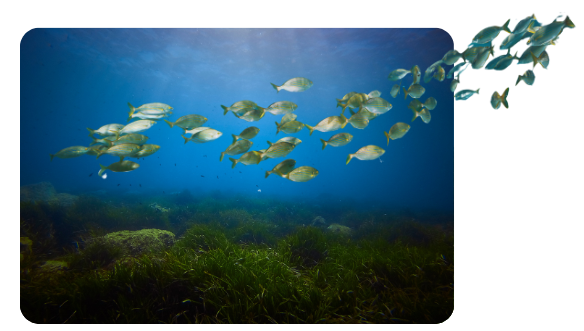Story
Novel bacterial gene makes new step in the nitrogen cycle
18 February 2021
A newly discovered component of the nitrogen cycle could shed light on marine greenhouse gas emissions and their role in climate change, according to a study from Plymouth Marine Laboratory and Princeton University.

Nitrous oxide (N2O) is an important greenhouse gas, contributing to a warming atmosphere and the depletion of stratospheric ozone. It is one form that nitrogen can take as it moves through the nitrogen cycle across the atmosphere, land and sea.
Globally, the sea represents a large flux of nitrous oxide to the atmosphere, but some ocean regions seem to act as sinks for nitrous oxide – areas where nitrous oxide is actually removed from the atmosphere.
Nitrous oxide was previously understood to be removed from the ocean through only two routes: either release into the atmosphere, or conversion into N2 gas by microorganisms in environments lacking oxygen, such as seafloor sediments, in a process called anaerobic denitrification.
Whilst studying seawater samples during an Arctic research cruise, PML scientists noticed something unusual – nitrous oxide was disappearing from their incubated samples which were oxygen rich and isolated from the atmosphere. During a subsequent study a few months later, they observed similar reductions in nitrous oxide in Antarctic waters.
Whilst other researchers had indicated the potential for microbial communities to consume nitrous oxide, this is something that had never been observed in oxygen rich seawater.
The teams from Plymouth and Princeton widened their investigation to examine the microbial communities that were present. A large and diverse community of bacteria, containing a novel gene that enabled nitrous oxide consumption in the presence of oxygen, was found to be present in all of their samples from the north and south polar waters of the Atlantic Ocean.
Not only is the ability of these microbial communities to reduce or consume nitrous oxide a unique finding, but our recognition of this phenomenon will contribute to our understanding of the regional variation in nitrous oxide fluxes between the sea and atmosphere.
Dr Andy Rees, lead author and PML Senior Scientist, said: “To find a new component within the nitrogen cycle is incredibly exciting, especially where it has such relevance to our wider understanding of greenhouse gas emissions and climate change.
“Although there’s a lot still to learn, this is a key piece of the puzzle in understanding how the sea and atmosphere interact. We will use this knowledge to improve mathematical models that predict the regional and seasonal variability of nitrous oxide emissions from the ocean to the atmosphere.
“It was great to work on this with one of our trustees, Professor Bess Ward, and her team at Princeton University. Combining PML’s nitrous oxide measurements with Princeton’s research expertise in microbial ecology allowed this study to happen and is a lovely example of scientific collaboration leading to important results.”
Related information
‘Biological nitrous oxide consumption in oxygenated waters of the high latitude Atlantic Ocean’ is published Open Access in Nature Communications Earth and Environment
